Picking olives from the trees on your Italian property certainly offers a good physical workout in the fresh air. It can also be a great bonding experience for family and friends. Plus, you can share the proud moment you see the first golden oil pour from the press, and taste it on a thick slice of hearty Italian bread.
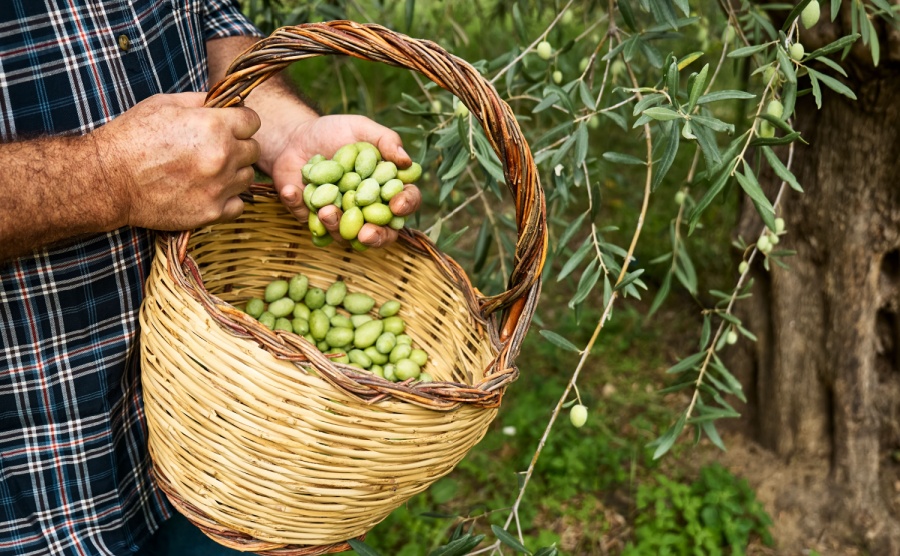
A man picking olives in Italy
Methods of picking olives can vary by location, the size of the tree and the terrain. Newbies can learn a lot from their Italian neighbours, as they will be able to recommend the best local press. My partner and I were helped by the Italian couple who previously owned the property we moved into, but not everyone has a Pastore and Maria to help them get started, so here is what we learnt…
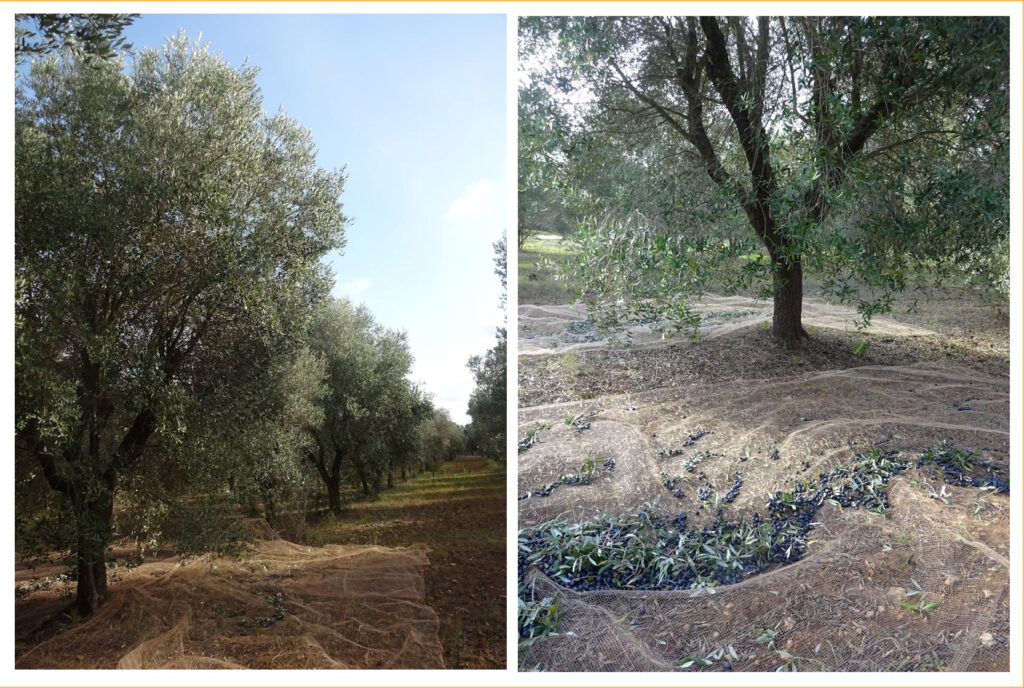
Julia shares photos of her groves when harvesting olives
Find homes in Italy via our property portal.
Step 1: Drop on the nets
Firstly, plough and roll the land, so you don’t get weeds growing up through your nets. The big old trees that have been allowed to get high will be difficult to hand-pick. Therefore, you can place nets under them, and just wait for the olives to drop when they are ready. You can buy rolls of net from the local agricultural supply shop along with big plastic bins or crates to put the olives in.
Going tree to tree, roll out the net, cutting it to cover the dropping zone of each tree. Look around your land for big heavy stones to weigh them down with. Otherwise, they’ll end up all over the place on a windy day. We had nets rolling around the land a few times.
When you have a good number of olives on the nets, simply lift and pour them into the bins. Then put the nets back down, ready to collect more. Remember that the shorter the time between the olives dropping and them being pressed the better the oil. The oil produced from olives left on the nets a few days is generally good enough for cooking, but won’t produce extra virgin olive oil.
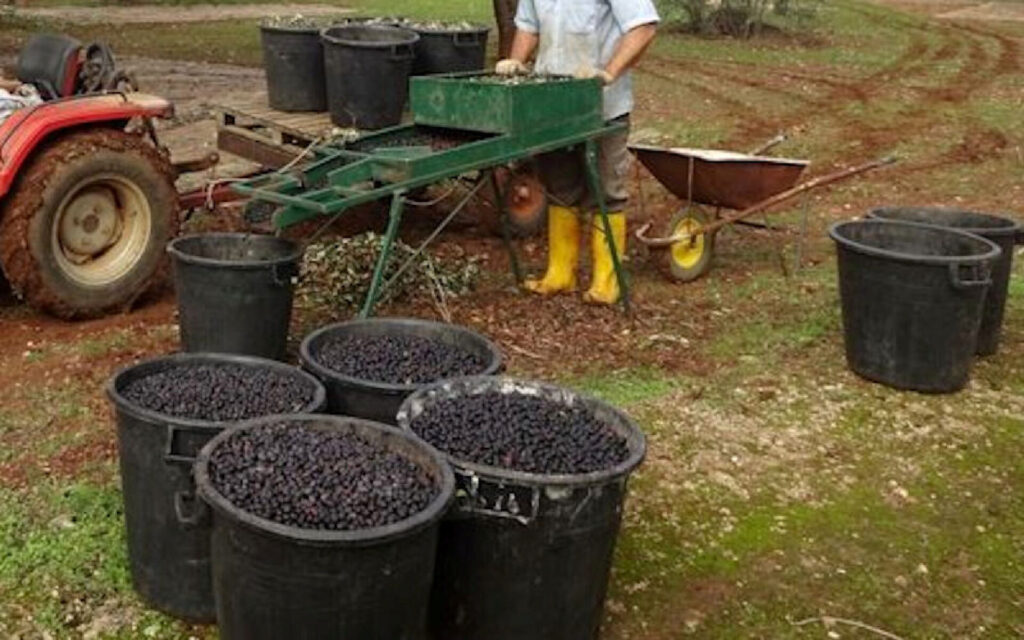
The aforementioned “tic-tac” separator
Step 2: Separating the leaves
You will get leaves drop as well, which can be separated from the olives by tipping them into a hand operated contraption with metals grills. You put the olives in the top tray and shake it back and forth. The olives drop through the grill and roll down into the bin. But the leaves stop in the top tray and you can tip them out. The previous Italian owner of our land called it a “Tictac”, because that is the sound it makes when you push it backward and forward against the springs.
Step 3: Roll, drop and sweep
Some of the older Italians don’t use nets at all. They prefer to clear the area around the tree of any stones and leaves, then roll the ground flat. When the olives have dropped, they sweep them up with what looks like a witch’s broom. When they put them through the “tictac,” the stones drop out the bottom, leaves stay in the top, and the olives roll down into the bin.
When you take these olives to the press they won’t earn as much as the handpicked olives, as they have been sat on the ground and possibly mud for several days, sometimes weeks. Some presses won’t accept these olives. If you find one that does, be careful that you get back the oil from your own olives and not inferior oil from ones that have been on the ground.
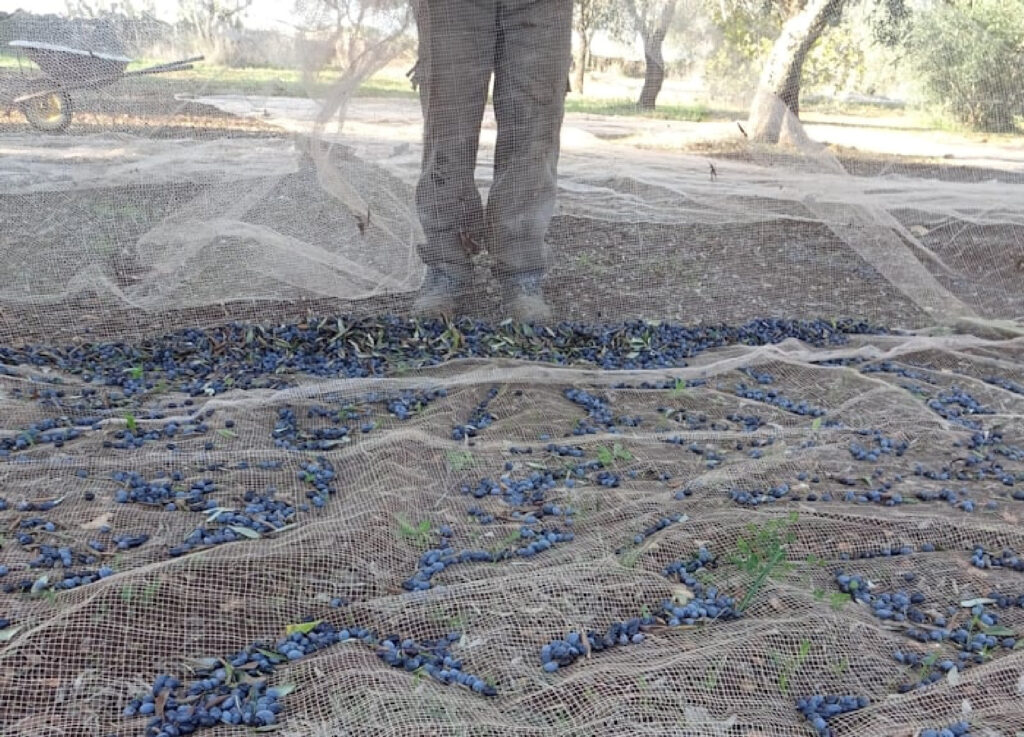
A thin net placed under the trees collects the olives
Step 4: Hand-picking the smaller trees
To hand-pick, place a net either side of one small tree and secure with stones. Hand pick using a plastic hand rake, by combing the branches downwards the olives will drop easily. If they don’t they are probably not ready. We tape one of the hand rakes to a wooden broom handle to reach higher branches and an extendable paint roller pole to reach higher still. Or you can go up a ladder or climb the tree. You should wear the light weight gardening gloves, because some olives you will want to remove by hand. You simply comb your fingers down the soft branches and the olives that are ready will drop off easily.
When you have finished picking the first tree, you can gather up the net, so the olives roll down to one end. After tipping the olives into a bin, you can drag the nets to the next tree. Our press doesn’t mind a few fresh leaves in there, it proves we have just picked them. But we do pull out some of the leaves and bits of branch.
We hand pick the smaller trees, usually starting in November or when they look ready. Just make sure the local press is open first. Go along and ask what they are paying, it’s worth asking at a few, to see who offers the best price. Some will only take hand-picked and only from the local area.
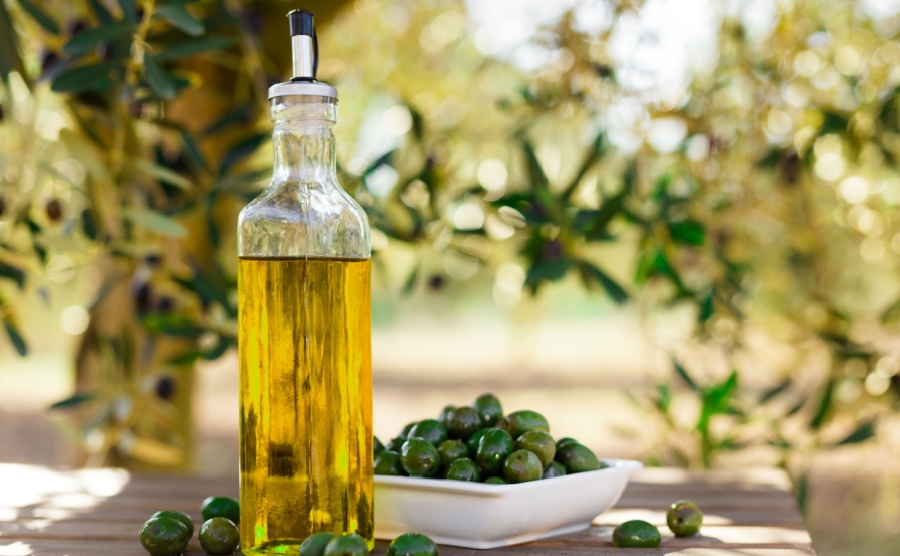
Olive oil is a precious commodity in Italy
Olive Oil for yourselves
Generally, the picking season runs from end of October to January in our area of Puglia. If we want some olives pressed for oil for ourselves, we usually take along to the press a 50 litre churn (which has a tap on it). Roughly 300-400kg of olives will fill it with oil. We are charged for the pressing of our olives and told the acidity level, indicating if it is Extra Virgin or not.
Extra Virgin Olive Oil
As defined by the European Commission, the highest quality olive oil (Extra-Virgin Olive Oil) must feature a free acidity lower than 0.8%. Virgin olive oil is characterized by its acidity, which should be between 0.8% and 2%. The press we use also uses a cold extraction system which means that no heat is added during extraction, as required by the EU.
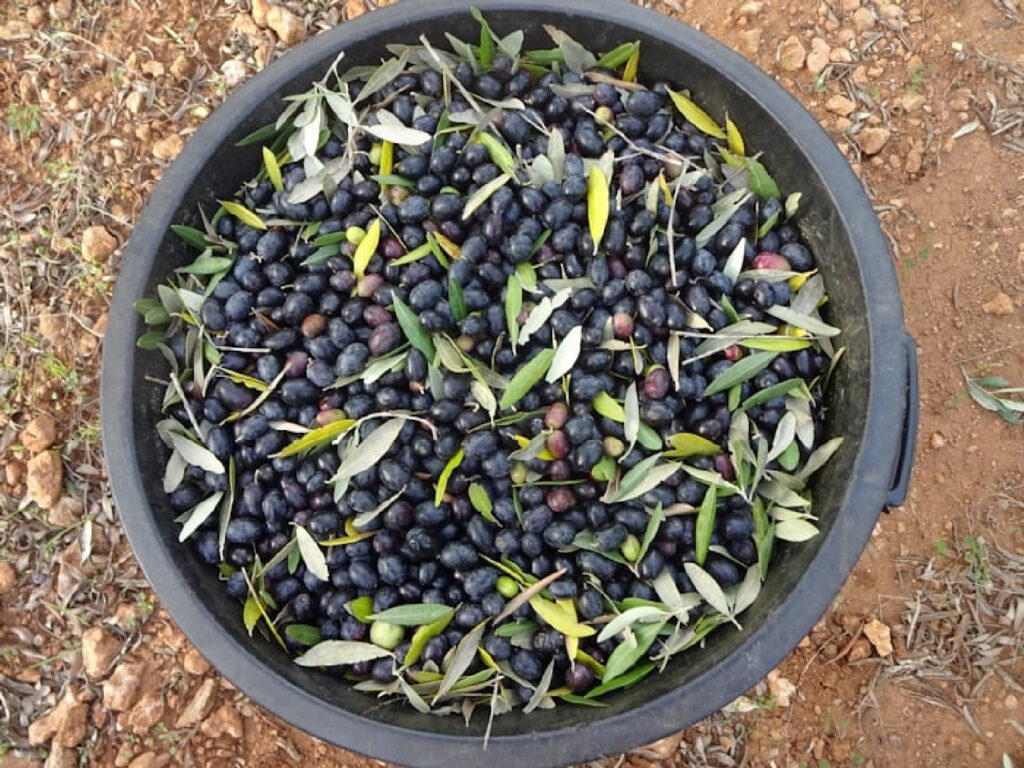
Olives collected into large bins
What happens at the olive press?
You take your olives to the press in big plastic bins. We could fit nine bins in our old estate car and found that it was as many as we could comfortably pick between the two of us in a day, picking from 9am – 3pm. Some people also use crates. At the olive press, they weigh the olives by quintali (1 quintali = 100 kilograms) which is about three and half large bins of olives.
Some presses weigh the olives loose and at others, you drive onto the scales, where they weigh the car with the olives. Once they are unloaded they weigh the car again and subtract its weight. If you want to sell the olives they will offer you a price per quintali. Each press sets its own rates and they can change from week to week. It is worth asking an Italian neighbour which press is giving the best rate in your area and take him with you if you can. One quintali of olives can give you around 13 litres of olive oil. You can find out more about the pressing process by visiting a press or viewing their website, such as Sant’Oro Olive Press in Puglia.
Other harvesting methods
There are a few other ways to harvest olives, some more labour intensive than others. If you don’t want to pick them yourself you could do a deal with a local who has picking equipment, and will take the olives and give you a percentage of the oil.
One year we let a team come with vibrating rakes on poles. They also had a kind of vacuum to pick up the olives from the ground. A few people use tree shakers, that grab the tree and shake the olives out into an umbrella. But you need the right thickness trunk for that.
Ploughing
We bought a small second-hand tractor to do the ploughing ourselves. It’s good for bending round the small trees in rows and has a shallow plough, so as not to damage the roots. But we also know a local guy with a big tractor that charges us a fair price if we want a big open area done quickly. On smaller plots you’ll see people using a small push along rotovator to turn the soil.
Free wood
The other great thing about pruning and windfall branches from our olive trees is, we can chop the wood to use in our woodburning stove. We have a large stove in the kitchen, which has two water tanks attached, to provide hot water for radiators and taps.
We have no heating bills, just my husband’s labour chopping the wood. If you want to use your wood in a wood burner it is best to leave it to dry for at least a year. Olive wood burns well and much slower than pine.
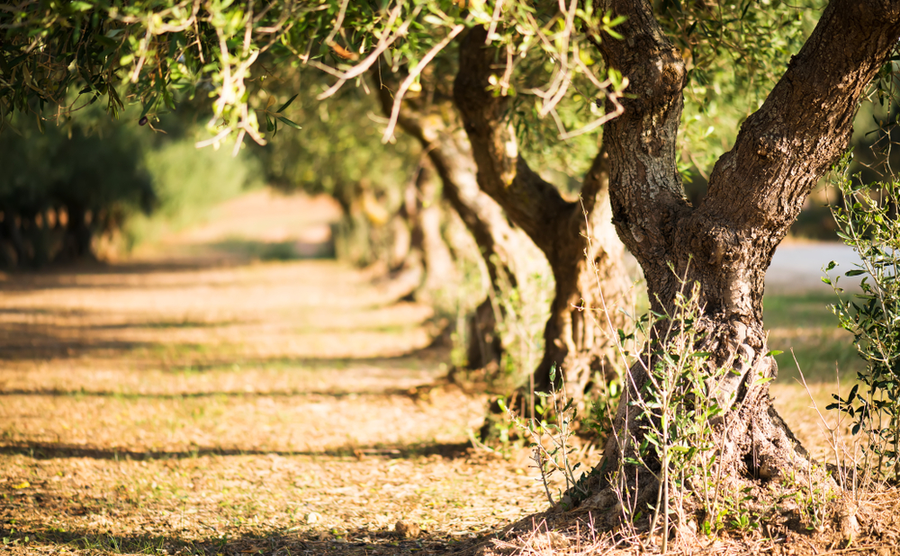
Olive trees on a grove in Salento, Puglia
Do I need to prune my olive trees?
This year was expected to be a low-yielding year, so many farmers chose to prune their trees either in the spring or early autumn. After a severe pruning you might not get many olives on that tree next season. For this reason, farmers tend to prune on a rotation system, only pruning a portion of their olive grove each year. Pruning helps air circulation and allows light to get through to the centre branches, which helps prevent bacterial and fungal infections.
The person who ploughs under the trees will appreciate the lower branches a bit higher. Otherwise they will be continuously having to duck and have their hat dragged off. If you decide to handpick your olives you will wish the hard-to-reach high branches had been pruned too.
As full-time residents, we are entitled to an EU subsidy for our olive trees, which more than covers any costs involved in getting someone in to prune and plough, when we don’t fancy doing it ourselves.
Space and privacy
The land that comes with your olives trees is also a great bonus as it provides space, privacy and a distance between you and your neighbours. You can comfortably sit outside on warm Italian evenings and take walks around your land, spotting the wild flowers and birds. Plus, if you have pets they will love it too.
To find out more about buying an olive grove, and olive farm tourism see my other article: With the rise in olive oil prices, maybe it’s time to grow your own olive trees? – Italy Property Guides
You might also like:










